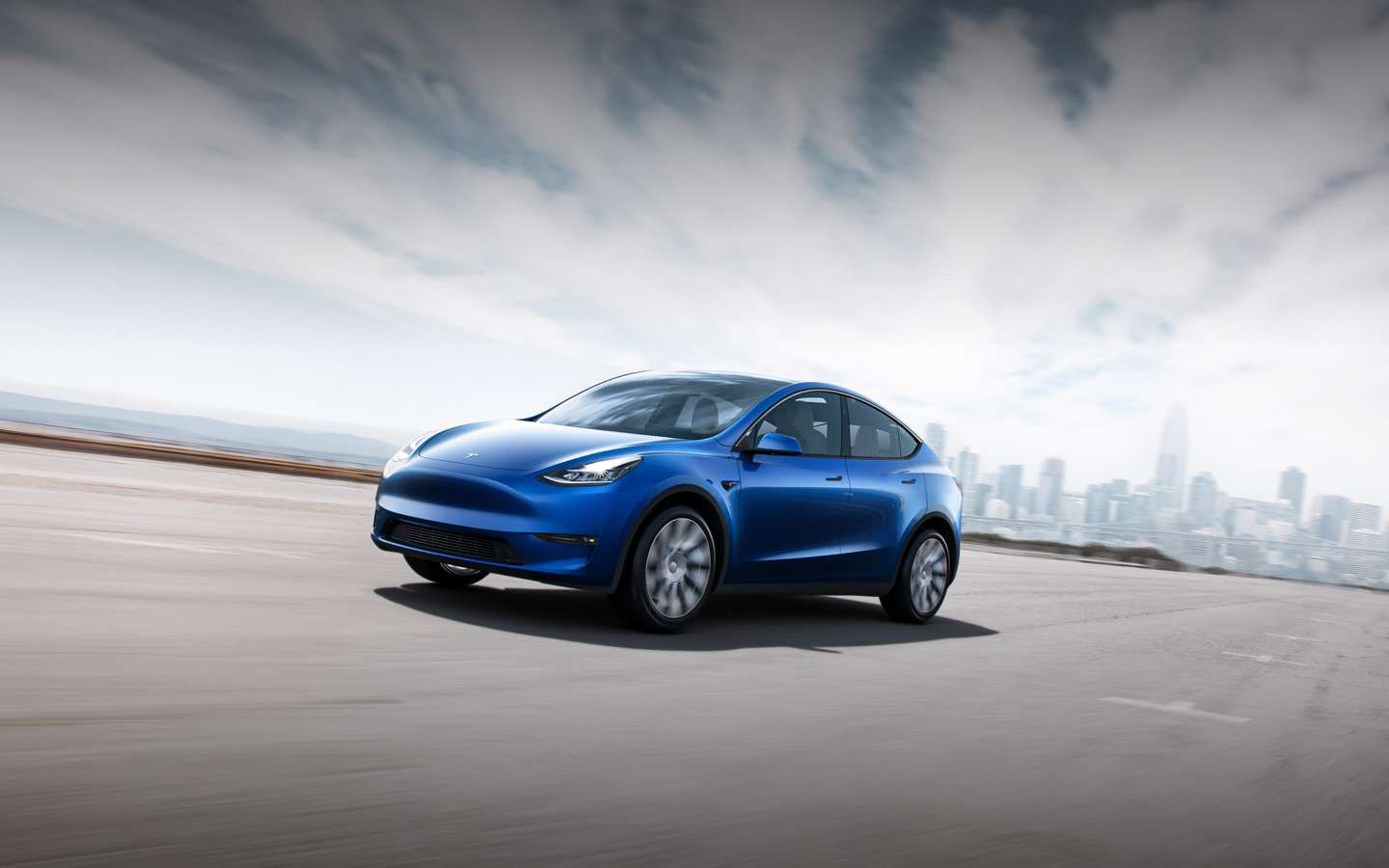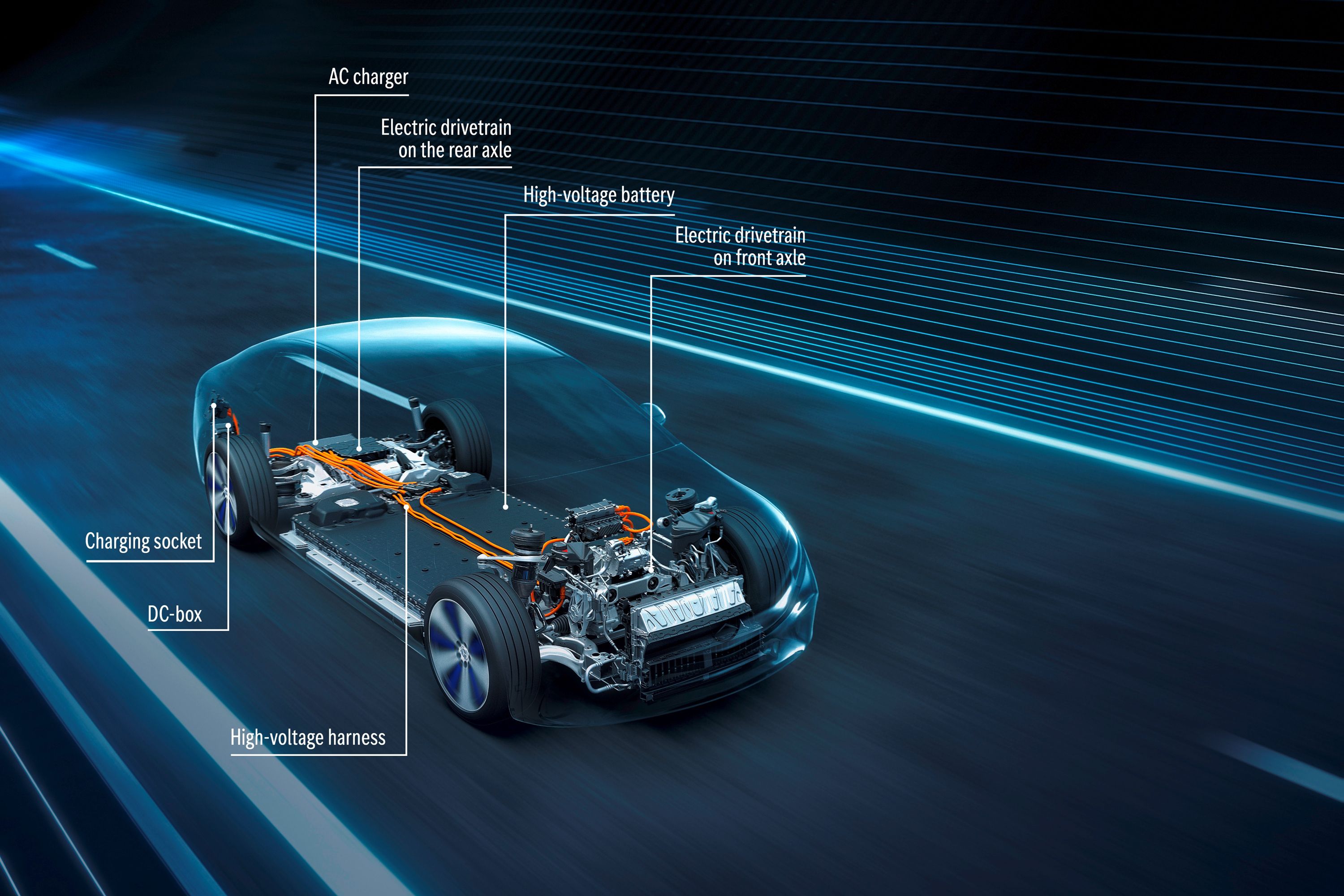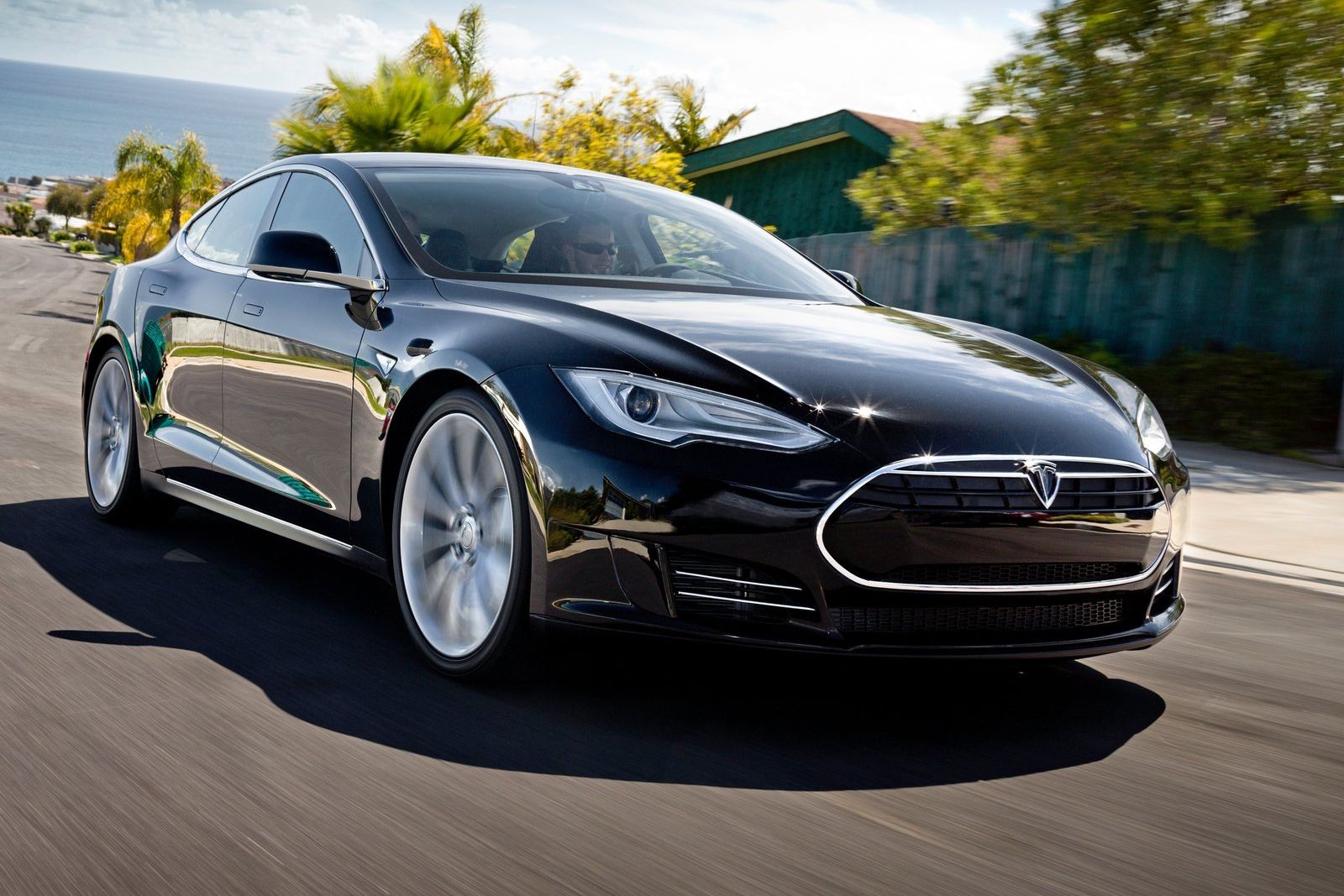
What are Electric Cars?
The Components of an Electric Car
The first basic electric motor was developed way back in the 1820s, and the remaining electric-car components came about in subsequent years. However, they never culminated in an actual electric vehicle. This is largely because of the constraints of the then-current EV batteries, namely their limited range, but the technology was also unrefined, expensive to produce, and noisy (believe it or not).
So how do modern electric motors and EVs work differently to make the technology more viable? Basically, the technology is more efficient than it once was and far cheaper to produce en masse.
Electricity stored in the battery is transferred to the electric motors, where it is converted into mechanical energy through the interaction of various components. The electric current creates a magnetic field in a wire winding, which generates the torque necessary to drive the electric motor's output shaft. Whereas a gas drivetrain has an efficiency of around 30%, the powerful Tesla electric motor drivetrain in a Model 3 claims to be up to 97% percent efficient - and it's virtually completely quiet too, as opposed to noisy ICEs. The regeneration functions of the braking also help charge the battery, using the motor as a generator to put charge back into the battery.
An EV has several unique components that replace an ICE vehicle's engine and conventional transmission. Here are the most important ones:
- An electric traction motor in place of the ICE - it's the electric car's 'engine'
- An electronic controller module that supplies the electric motor with power
- A DC/DC inverter or converter
- The rechargeable battery pack that stores energy
- A charger (with a charge port)
- A battery cooling system
- A simple single- or two-speed transmission to supply the required wheel torque
The Electric Car’s Motor… Or is There More Than One?
EVs don't necessarily have only one motor. The following types of configurations are possible:
- One motor. Obviously, one electric-car motor is the minimum number that can be installed in an EV and the single motor would usually be mounted between the front or rear wheels, driving them through a differential.
- Two motors. A dual-motor EV may have an electric motor per wheel on one axle, obviating the need for a differential and offering individual control of the driven wheels. However, the second motor can be placed at the other axle instead, giving the vehicle AWD ability.
- Three motors. Three-motor EVs have two motors on one axle with individual wheel control and the third at the other axle with a differential, proving AWD ability.
- Four motors. Four-motor EVs have a wheel per motor, but this is the rarest and most expensive configuration. It allows four-wheel individual control and torque vectoring.
Advanced EV and Charging Tech Brings EVs to the Masses
After the development of the lithium-ion (Li-ion) battery in the 1980s, EVs finally became viable, since it can store enough energy to offer the type of range necessary for car use. Tesla was the first electric car manufacturer to adopt Li-ion batteries on a massive scale for EVs and, today, the vast majority of EVs use thems. Mass-production of these new advanced EV batteries means the price goal of undercutting $100 per kWh will soon be reached, bringing EV prices more in line with ICE vehicles. Many fast-charging modern EVs can also be charged to 80% in less than half an hour. Read more about charging stations for electric cars here.
Are EVs Actually Any Greener Than ICE Cars?
One of the primary selling points of EVs is their alleged reduced carbon footprint.There have been many debates around this issue and a 2020 story ran in the UK publications The Telegraph, The Times, and The Daily Mail certainly cast doubt on the topic. It claimed that EVs have to travel as far as 50,000 miles to break even with ICE vehicles in terms of total emissions, due to the emissions generated by the production of EVs. It turns out that several legacy automakers funded the story and it has been debunked several times since release, not least of all by Auke Hoekstra of the University of Eindhoven, who has proven that the breakeven point is closer to 16,000 miles.
Many subsequent studies have proven that EVs are greener, even in countries where most of the energy is generated from fossil fuels. With a less favorable energy mix, it just takes longer to reach that breakeven point. Of course, this is not the only reason for the transition to EVs, even though the burning of fossil fuels is bad for the environment. We also have to keep in mind that the supply of fossil fuels is finite and as the world moves towards renewable energy, EVs will become even more sustainable. EVs can only get greener as time passes and technology improves, and even wireless vehicle charging may be on the horizon sooner than we think.
Conclusion
Electric vehicles are about so much more than just replacing the ICEs under the hood with electric motors and having no gas tank. They also reduce our carbon footprint, as well as our centuries-long dependence on finite fossil-fuel reserves. Elon Musk can probably be credited with the current mass swing to EVs, ably assisted by VW's 2015 Dieselgate scandal. If it weren't for those two factors, the tipping point might have been a lot further into the future.


